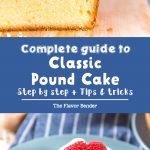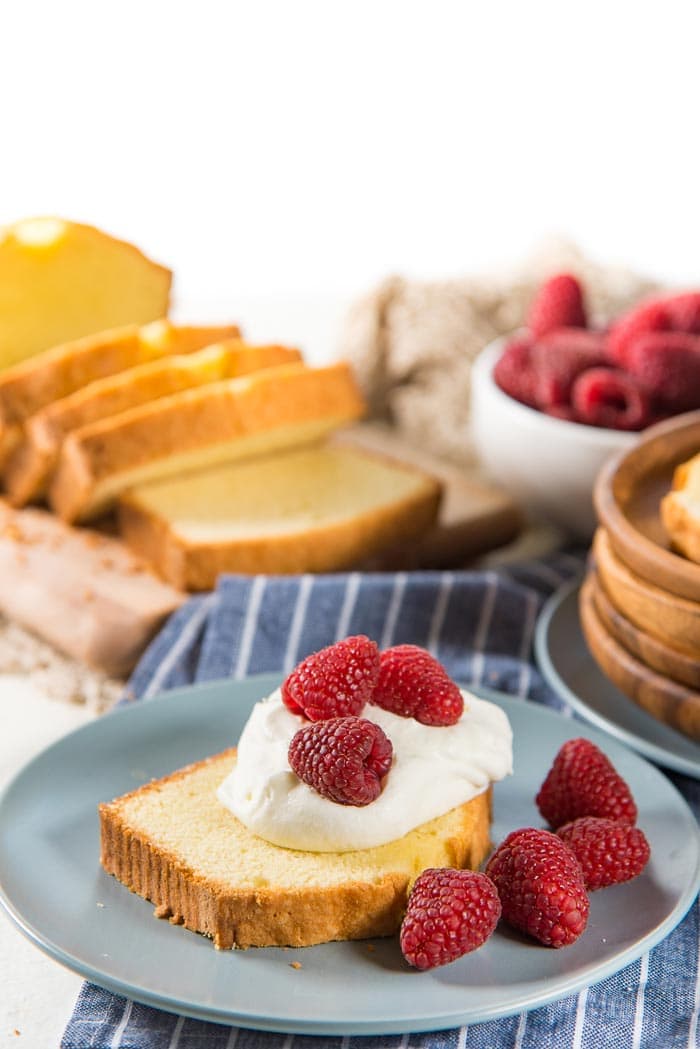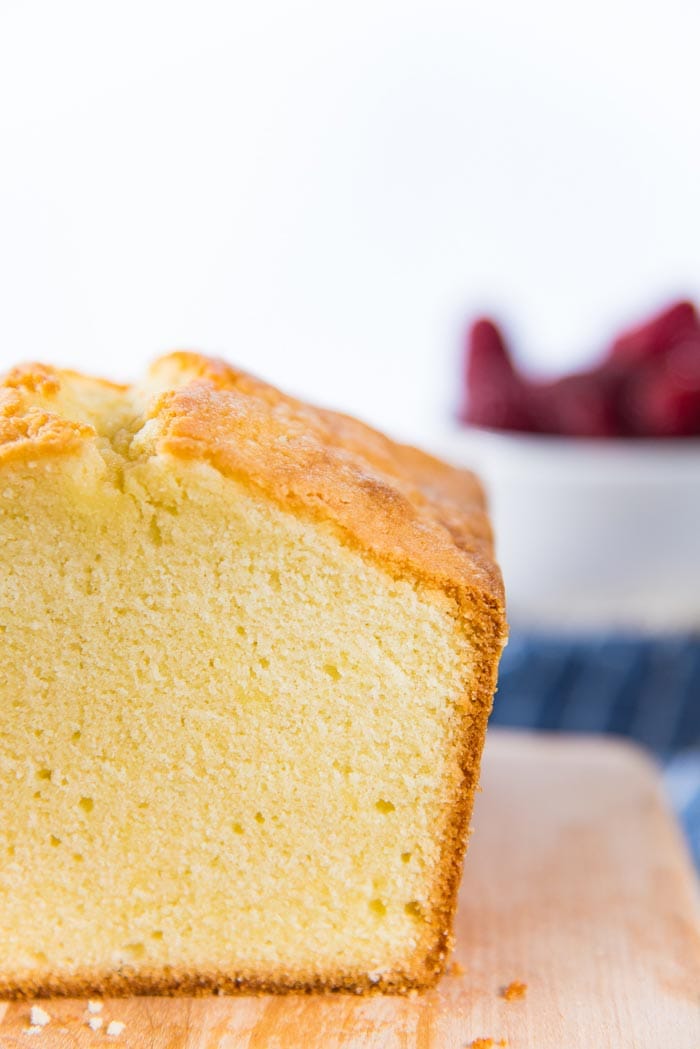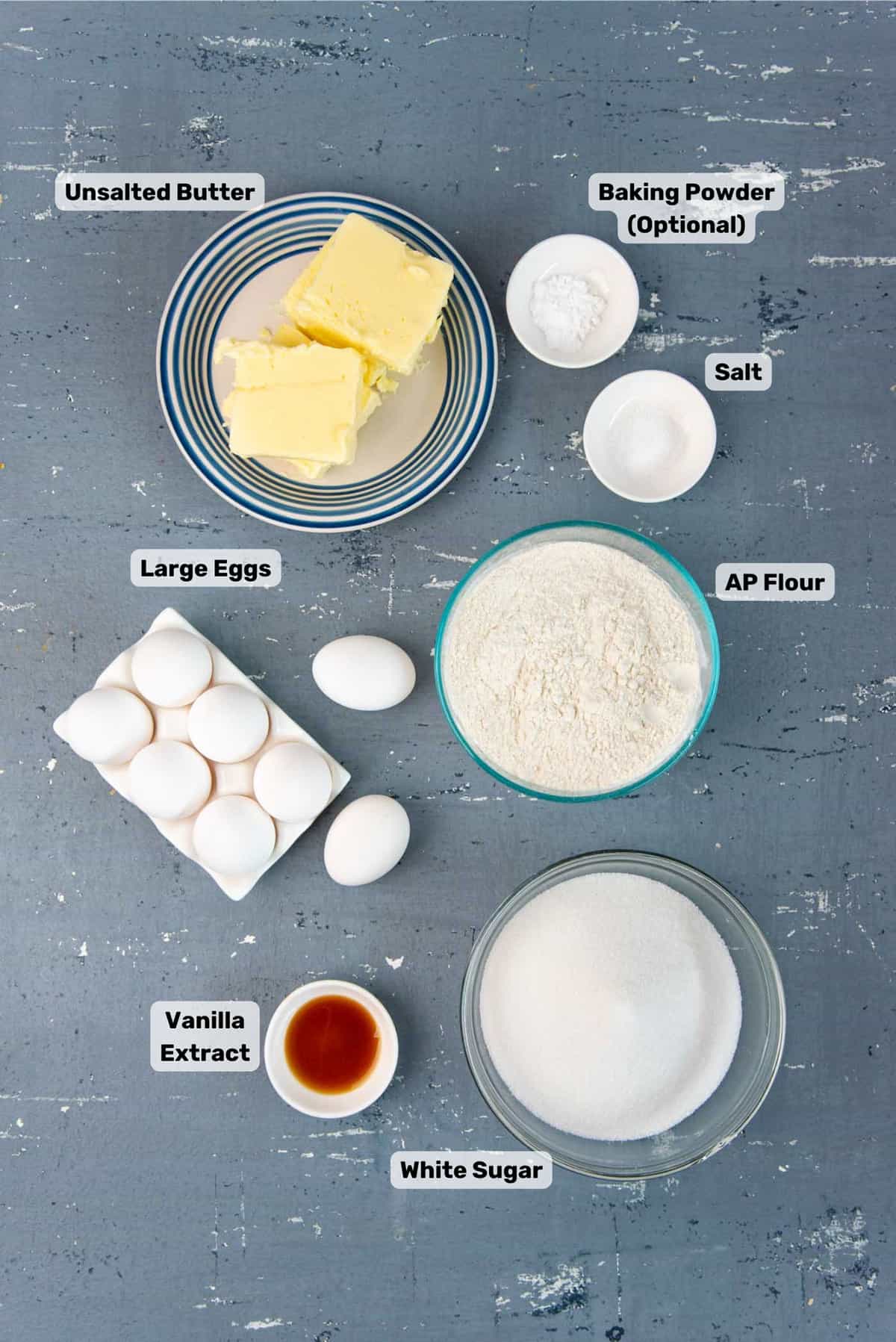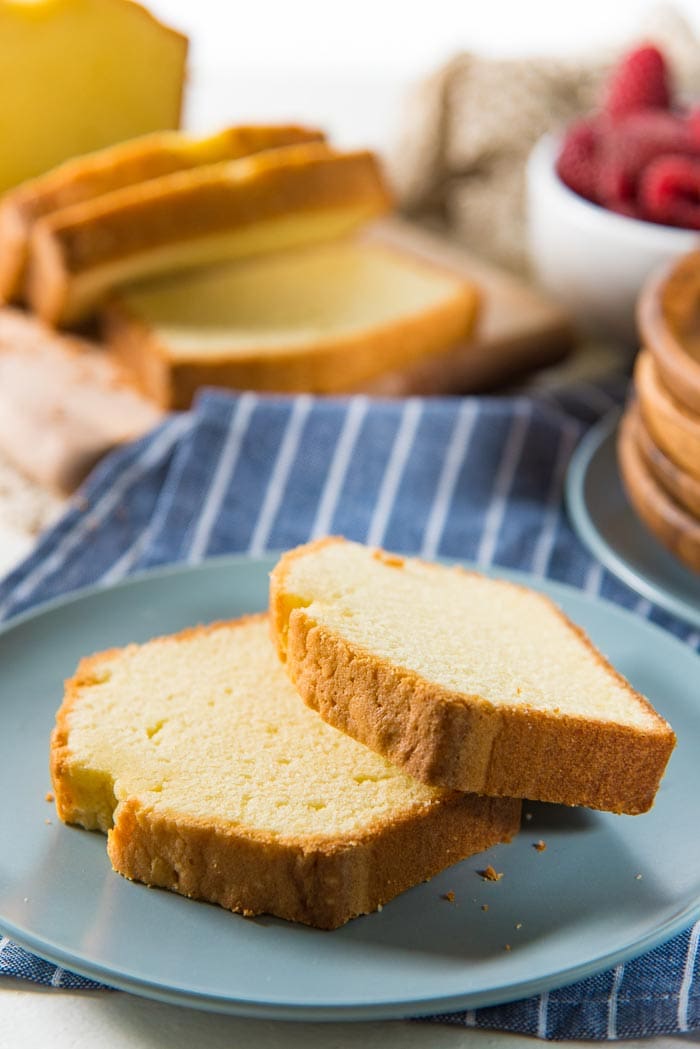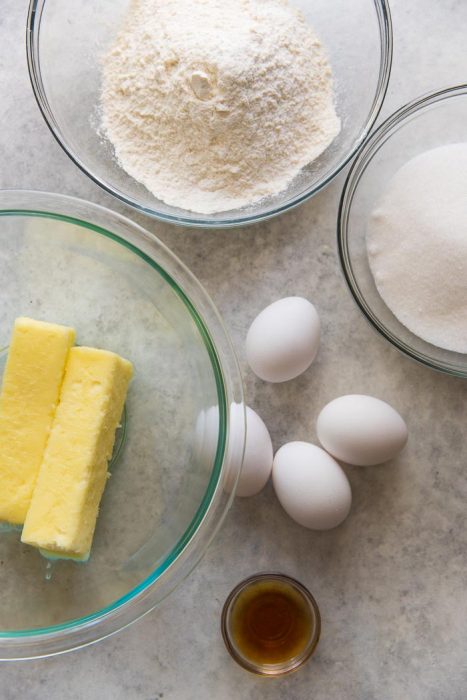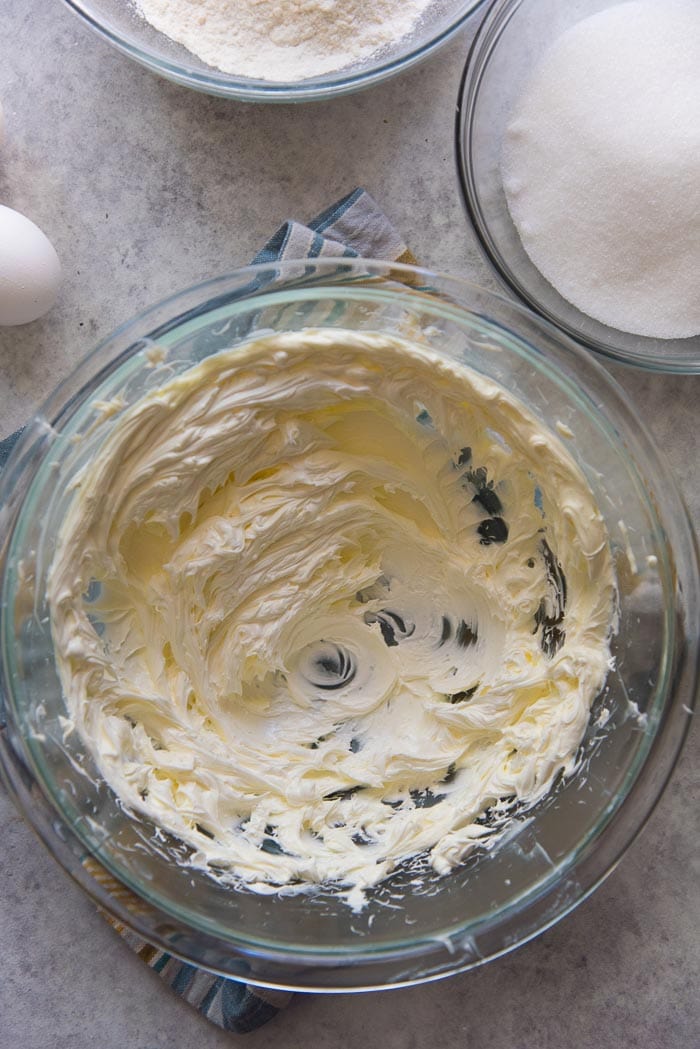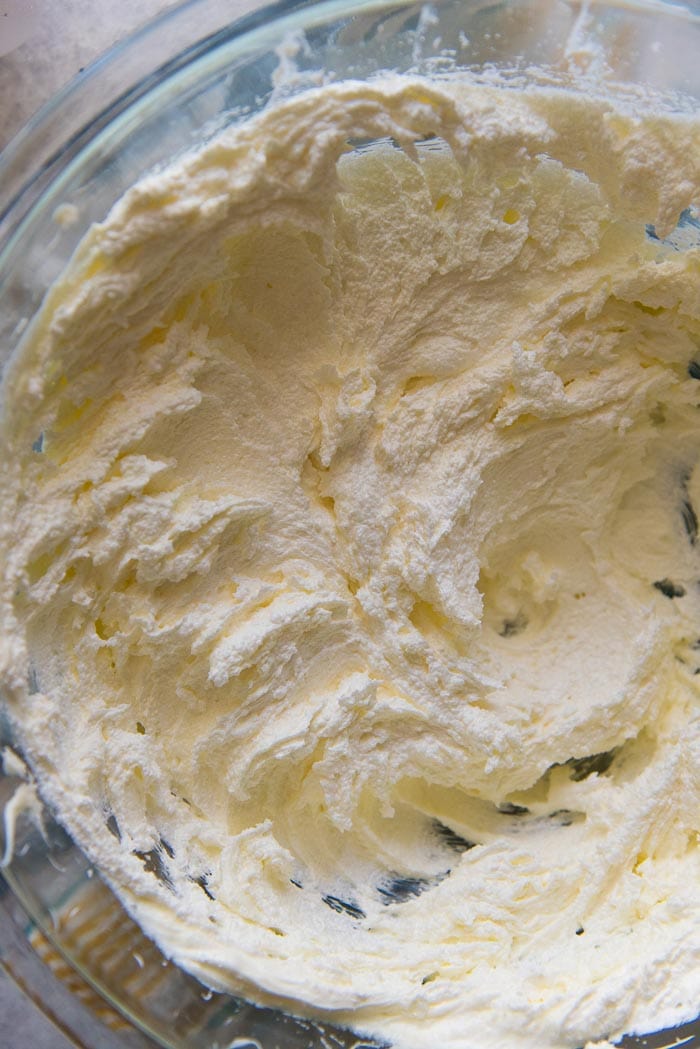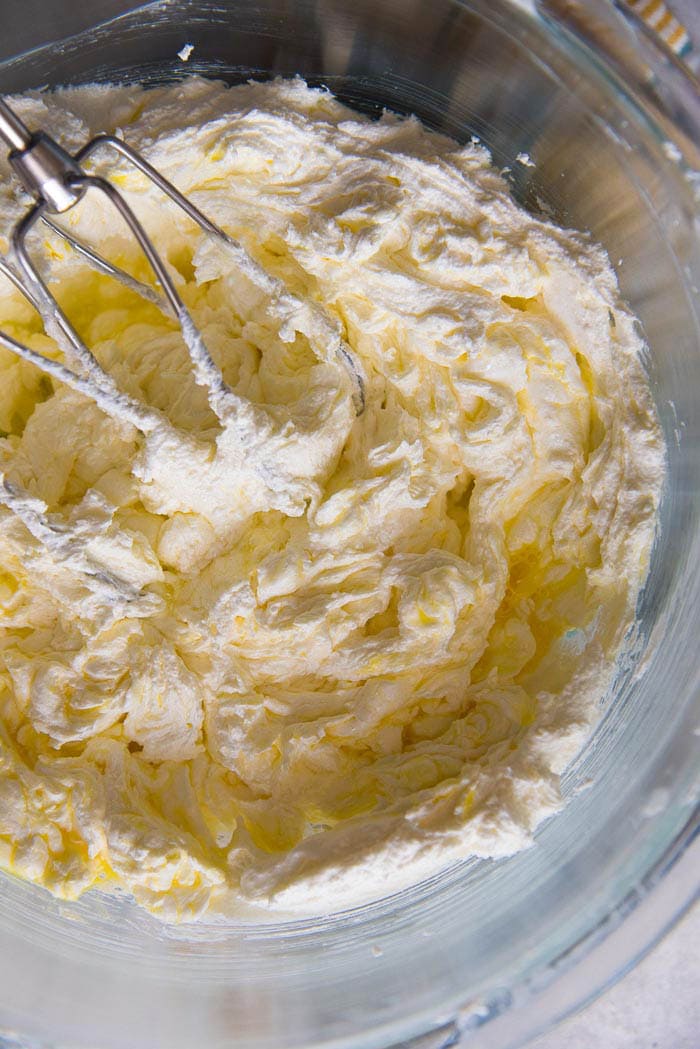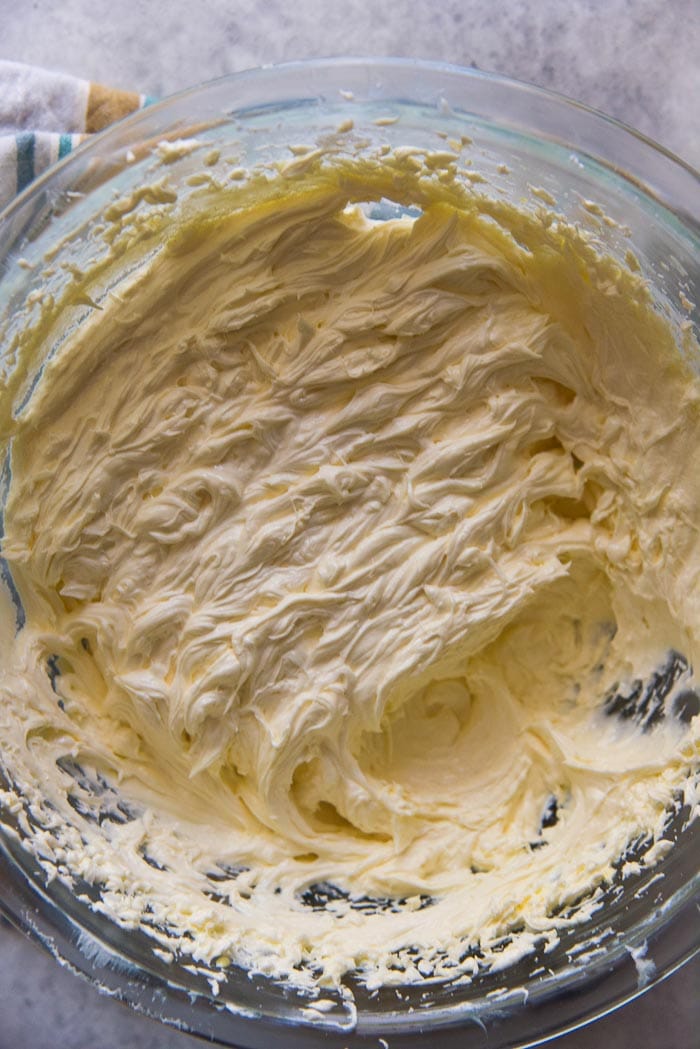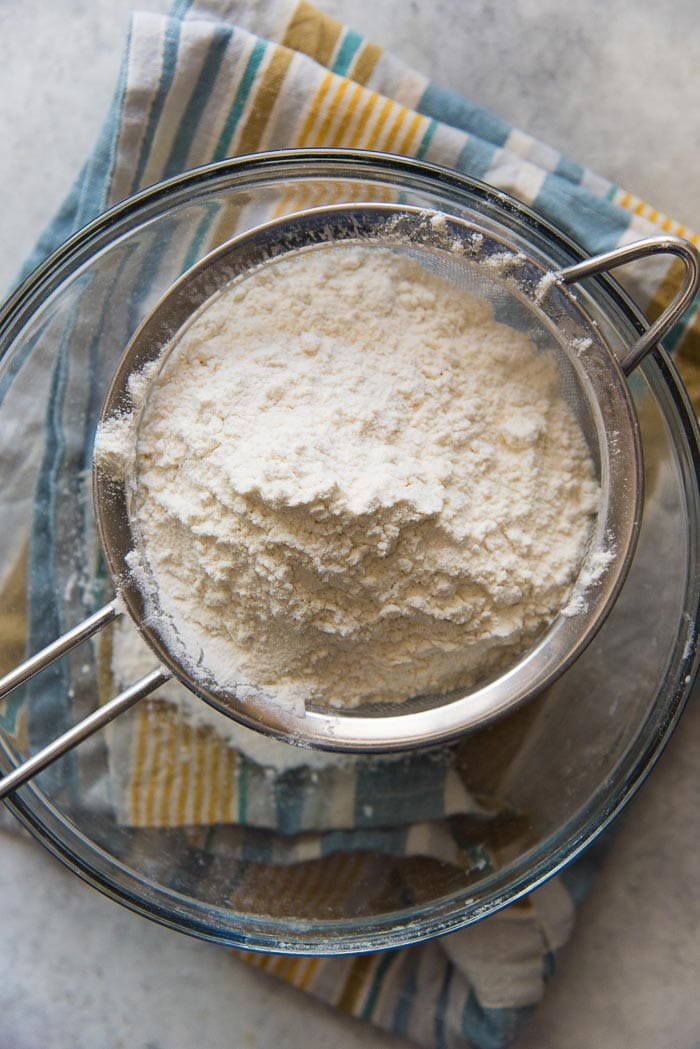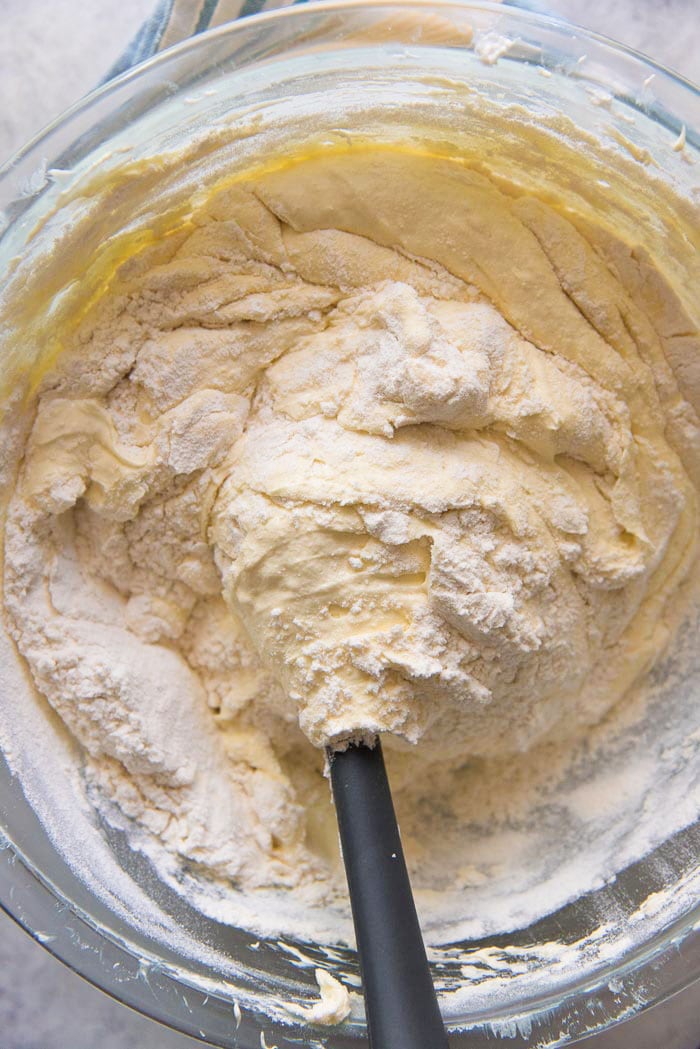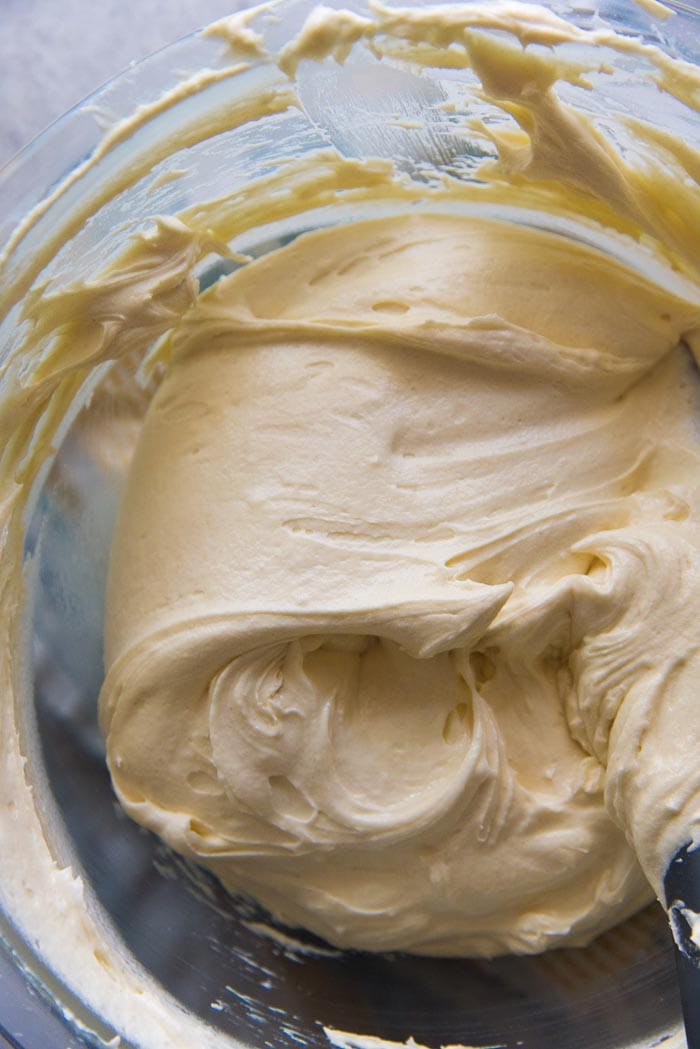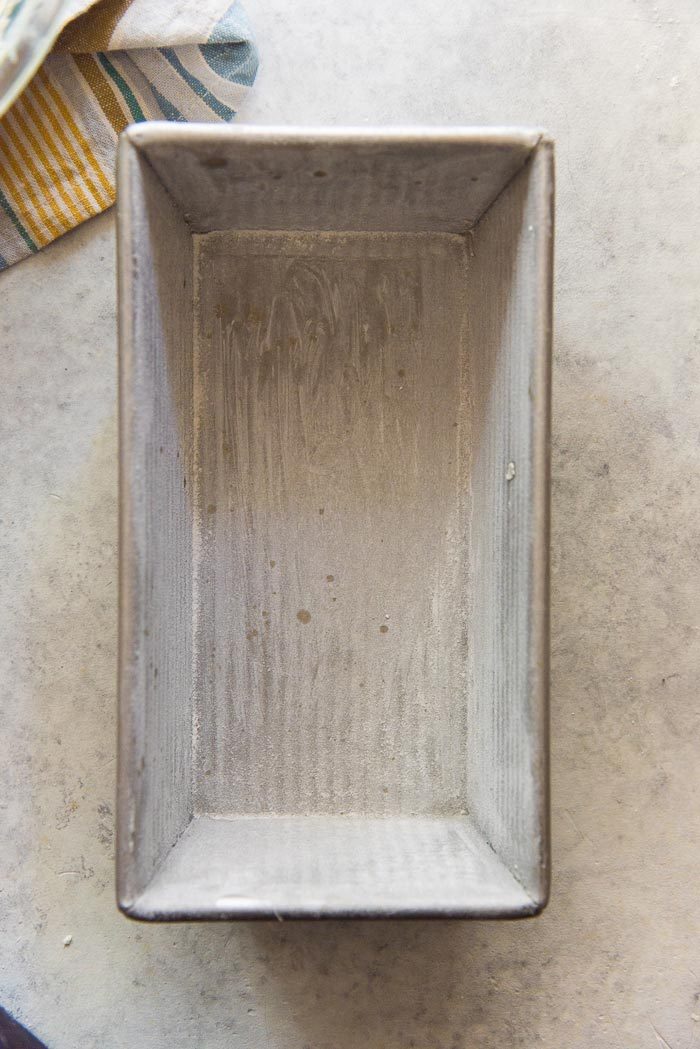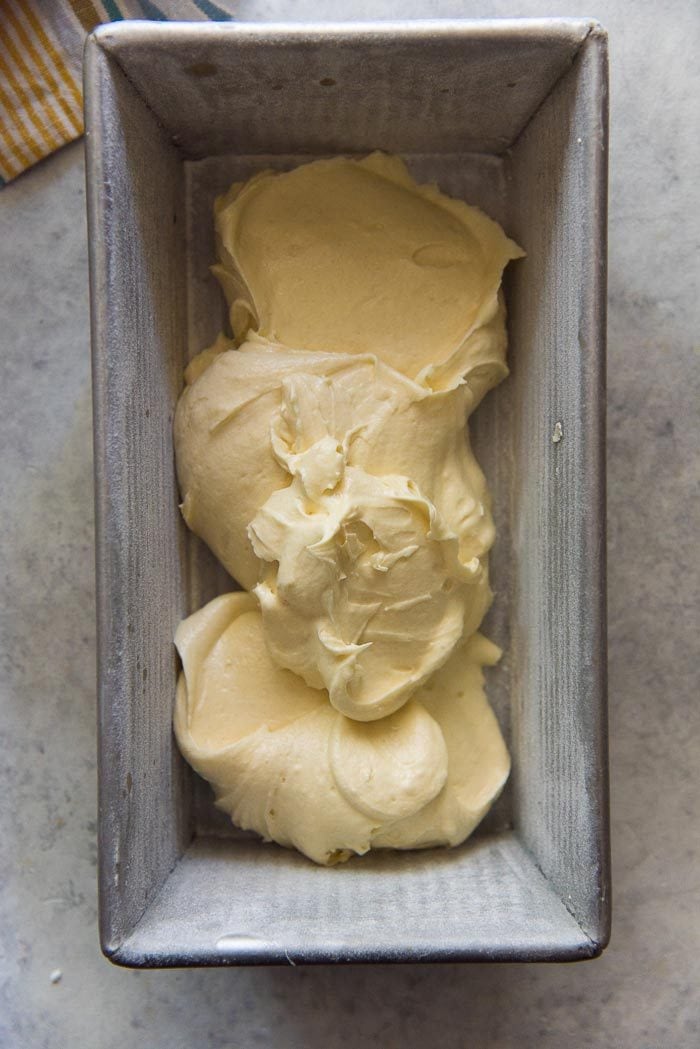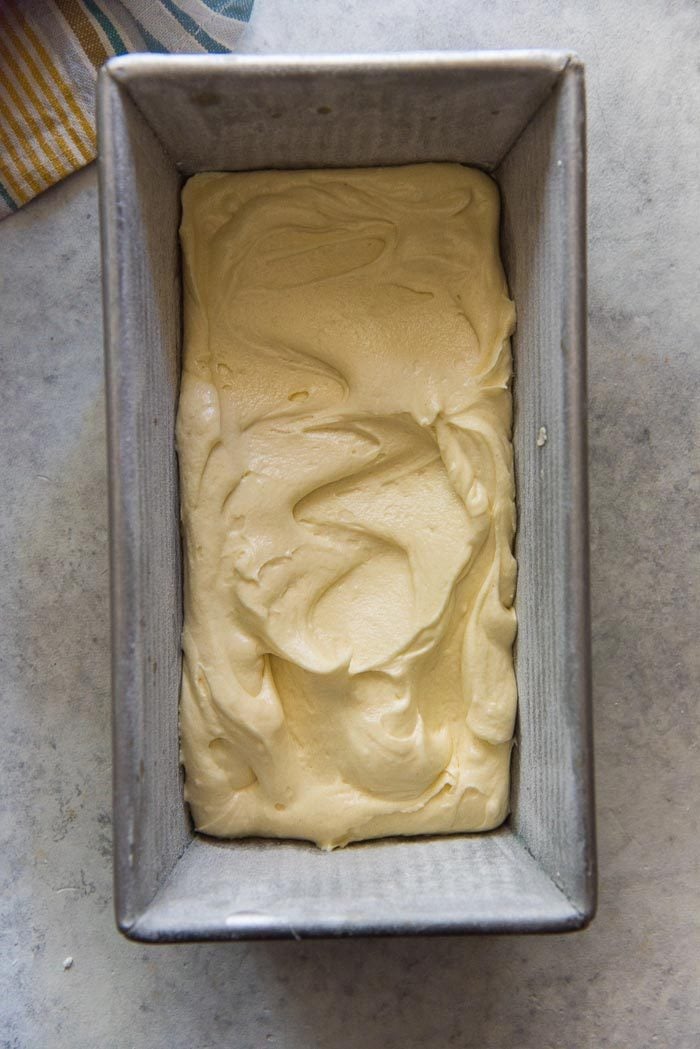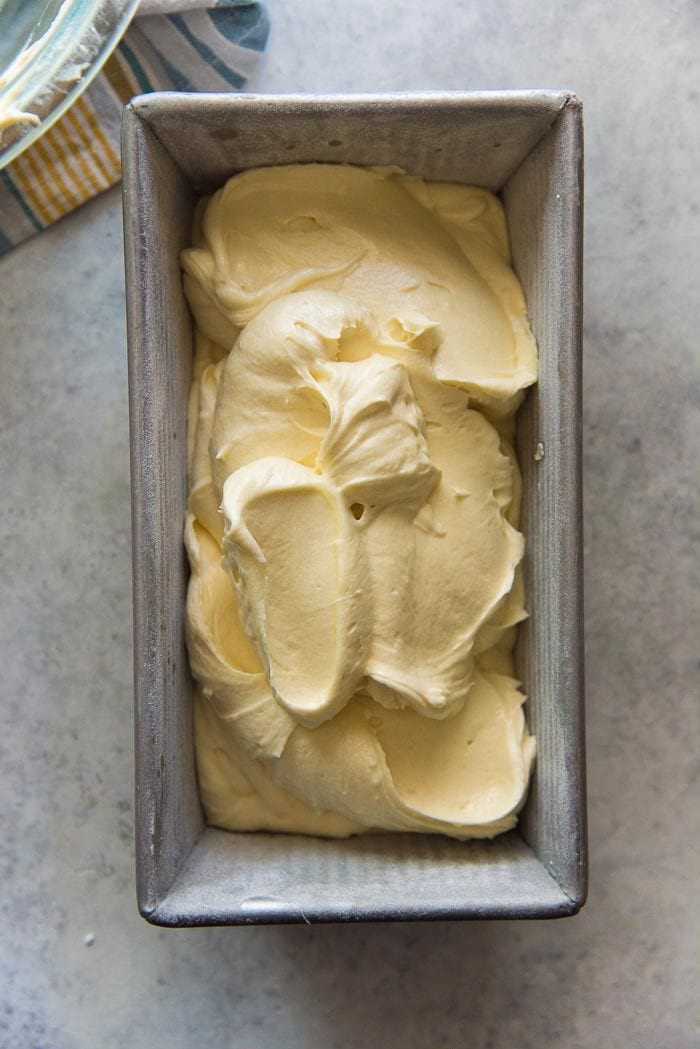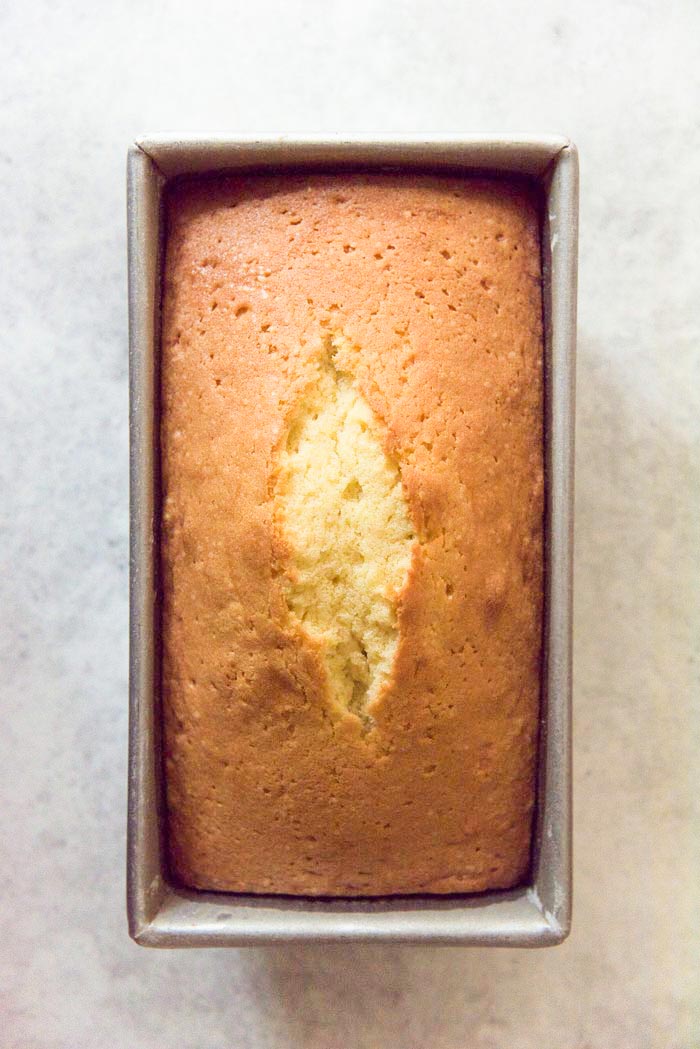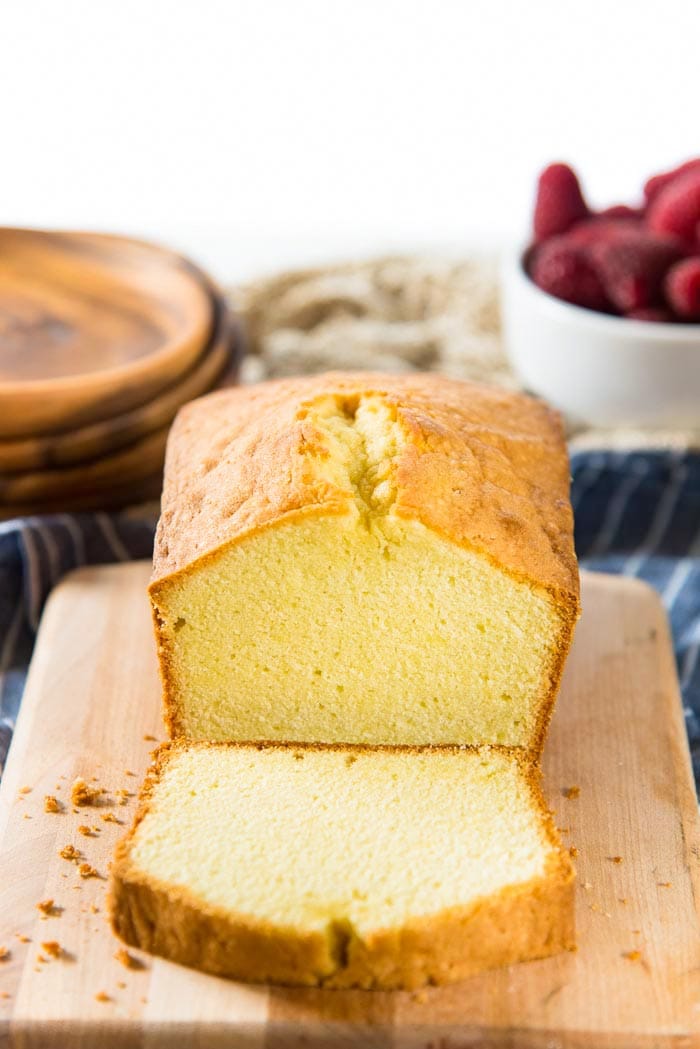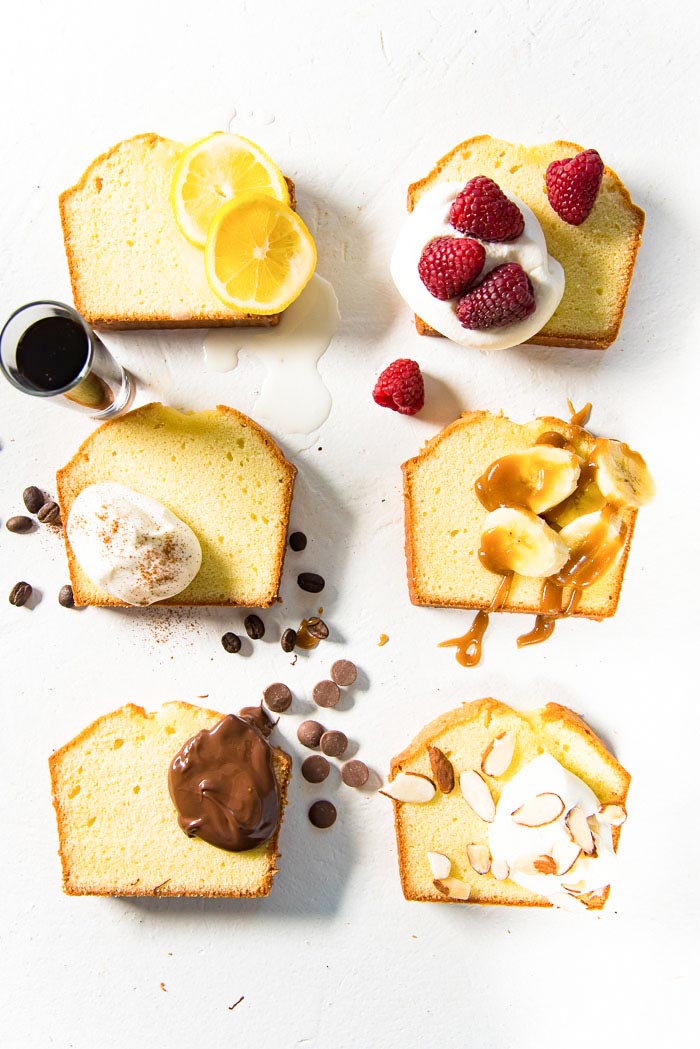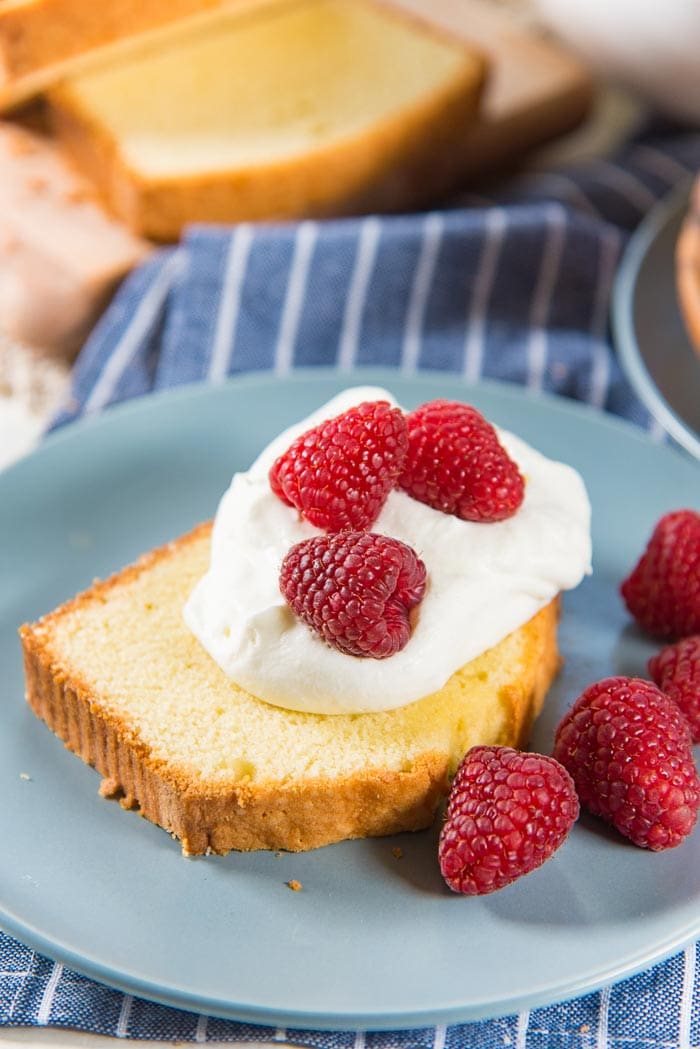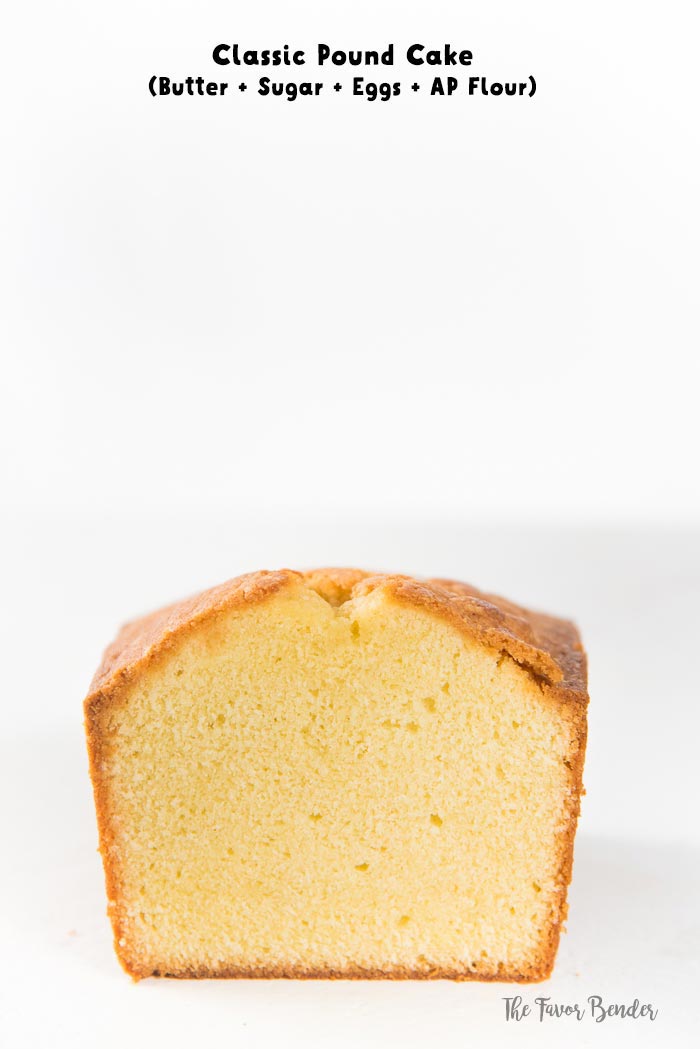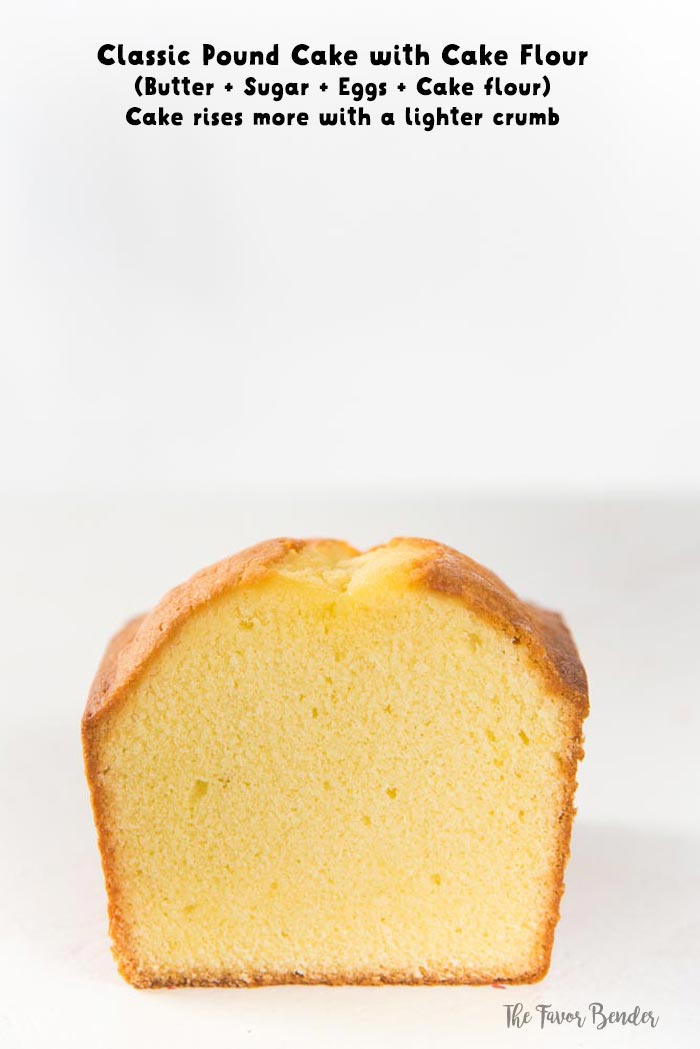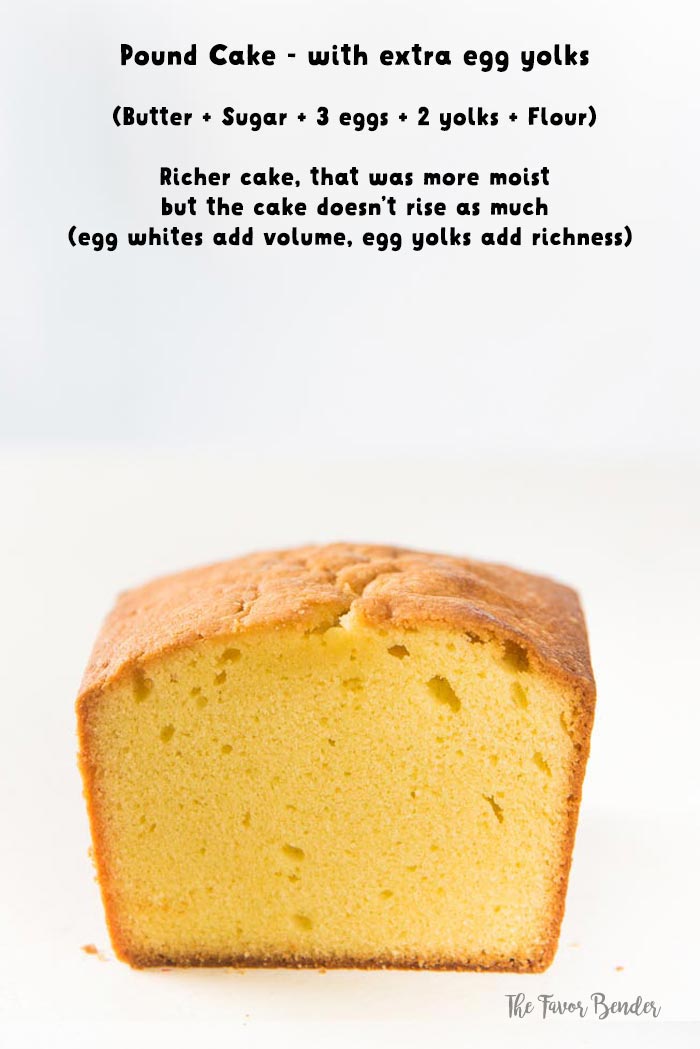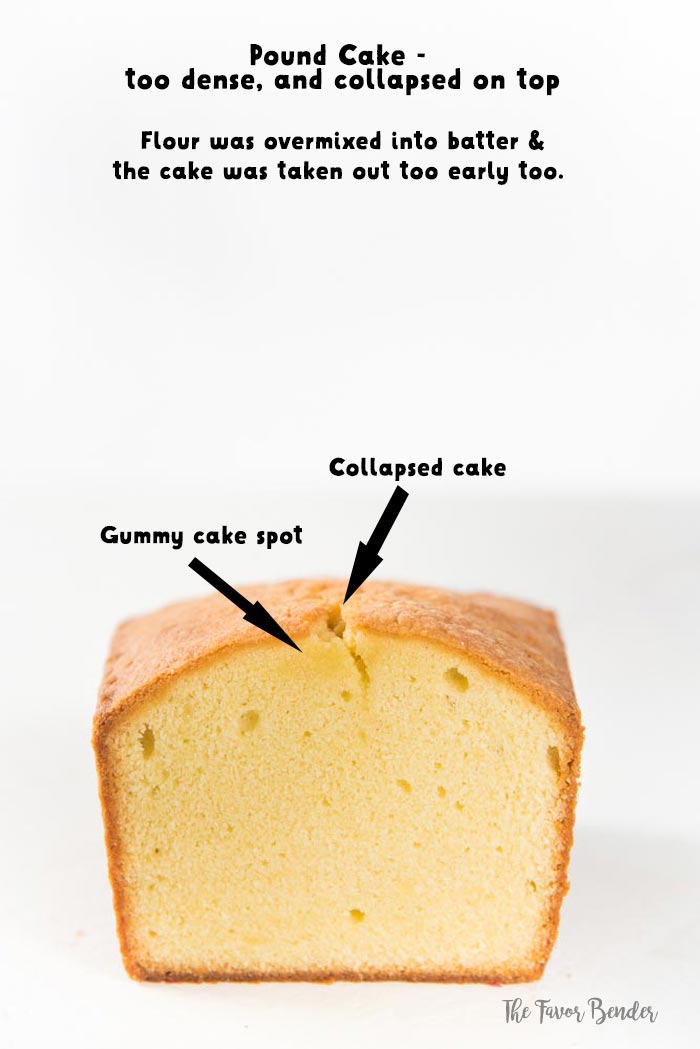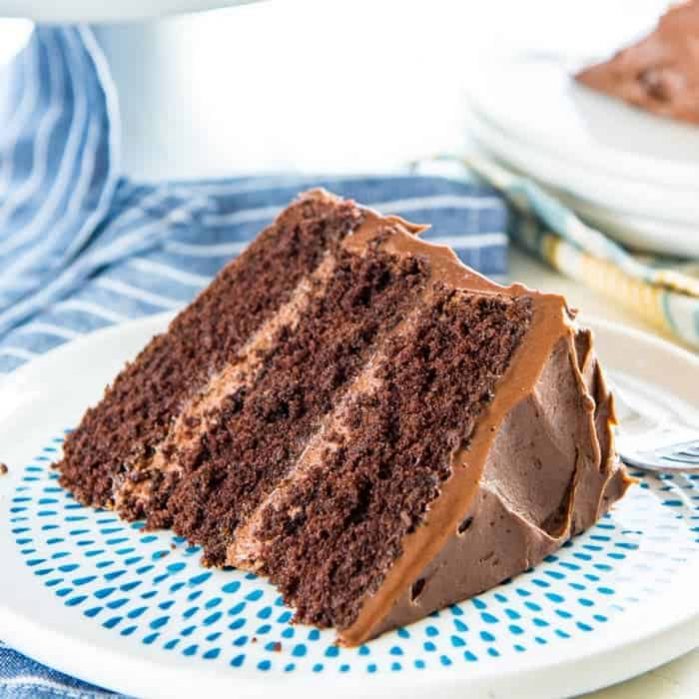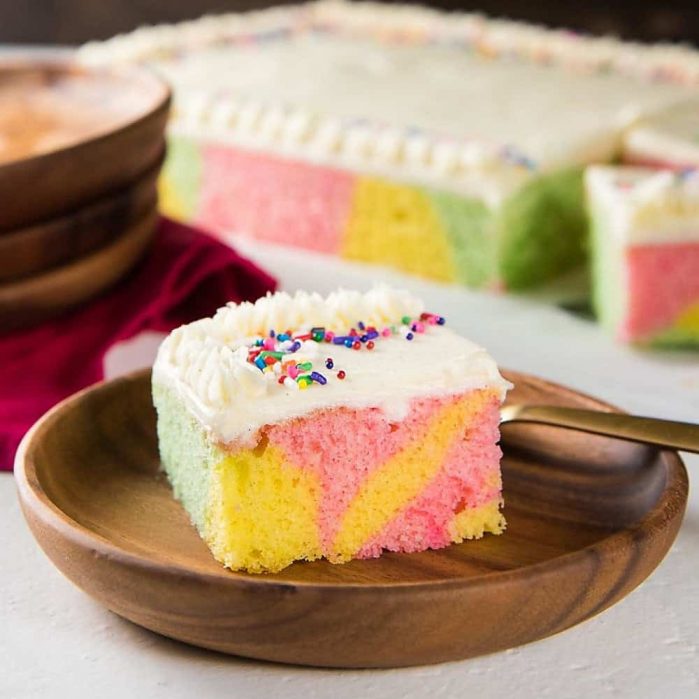The perfect pound cake is dense but soft, rich, buttery, and moist, and is easy to make. This extensively tested, foolproof pound cake recipe will guide you to make the best pound cakes that you’ve ever made!
What is a pound cake?
Pound cakes first originated in Europe. They’ve been around since as early as the 1700s, and the term traditionally referred to a cake that weighed four pounds. That’s because a classic pound cake consisted of 1 pound of each of the following FOUR ingredients,
Butter Sugar Eggs Flour
A classic pound cake doesn’t rely on any leavening agents (such as baking powder or baking soda) to give the cake any lift, or any extra liquid to make the cake moist. The result is a dense cake, that is also somewhat dry (especially when over-baked). As pound cakes have become more popular throughout different parts of the world, different variations of the vanilla pound cake have emerged, that are lighter and more moist. Each region (or country) has their own version of a pound cake, incorporating different ratios of the main ingredients, and sometimes including extra liquid and baking powder too.
Ingredients for this recipe
Start with good ingredients. Well, that’s a given, but it’s especially true with pound cakes. Rather than using generic ingredients, try and use brand name ingredients when possible.
Sugar
Make sure to get cane sugar because it has a finer grain than other white sugars (if it doesn’t say cane sugar, then it’s probably beet sugar). If you can get your hands on pure cane caster sugar (superfine sugar) that’s even better!
Butter
Use GOOD quality butter to ensure a good butter pound cake. Not margarine, not spreadable butter, but classic butter. I prefer to use unsalted butter, but you can use salted butter as well. However, due to the higher water content in salted butter, there’s a higher chance for inconsistent results when using salted butter.
Eggs
Use organic, free-range eggs whenever possible. However, avoid using really fresh eggs. Shocker right? I prefer to use eggs that are about 1 week old and here’s why. The egg whites in fresh eggs are tighter and thicker whereas in older eggs, the egg whites are thinner and looser. These older eggs mix into the cake batter more easily and readily, resulting in a pound cake that’s lighter in mouthfeel and crumb texture. Another reason is that fresh eggs are heavier than older eggs – so 8 fresh large eggs would be way heavier than 1 lb, while 8 older large eggs would be closer to 1 lb.
Flour
I prefer to use unbleached all purpose flour (AP flour) for my pound cake recipe. Mainly because it’s more widely available. But you can also use cake flour instead. This is lighter, and has less gluten than AP flour. Resulting in pound cake that rises a little more, and has a tender crumb. If you choose to go with pastry flour, you can substitute cake flour for AP flour at a 1:1 ratio – BY WEIGHT (not volume).
Salt
We add salt to balance the sweetness of the pound cake. Without salt, the cake can either taste too sweet or a little bland. A little salt goes a long way to improve the flavor of the cake.
Vanilla extract
Vanilla also adds flavor to your pound cake. A vanilla pound cake has more depth to its sweetness.
Baking powder (optional)
Baking powder is a chemical leavener (read more about it in my baking powder vs baking soda article). The acid and base react in the presence of liquid and create CO2, which helps to expand the batter and rise. However, unlike other cakes, pound cakes rely on air and eggs to rise. So it’s inherently a dense cake with a close crumb. But baking powder can be added to make the cake rise a little more – especially if you’re not fully sure that you mixed the ingredients well. This is why baking powder is an optional ingredient.
Pro tip about ingredient measurements
Always WEIGH your ingredients, rather than relying on cup measurements. I am a HUGE advocate for using an inexpensive kitchen scale for all your baking needs as I’ve discussed at length in my measurement conversions page. Baking needs some precision and a cheap weighing scale will ensure consistent baking results every time, which in turn will save you so much more time and money in the long run from failed recipes and wasted ingredients. If you do use cups however, it’s important to fluff up the flour and sugar in the container, and then scoop the flour and sugar into the measuring cup to the point of overflowing. Then, using a flat knife, level off the excess flour/sugar. It would still be difficult to guarantee consistent results this way, however. If you’re in the US, then 1 stick of butter = 4 oz / 115 g / or 0.5 cups. But for anywhere else in the world, the best thing would be to also measure the butter using a measuring scale.
Pro tip about ingredient temperature
It’s absolutely crucial that all the ingredients are at room temperature (70-75°F or 20 – 23°C).
Butter temperature
Butter should be softened, but not too softened. Here’s a crude way of checking if your butter is at the right consistency – make an indentation in the butter with your finger. If the butter is too hard to make an indentation, then well, the butter is too hard. But if the butter does make an indentation, but it doesn’t keep its shape, and the butter around the indentation loses shape, then the butter is too soft (the butter can also be too oily when it’s this soft). If it’s easy to make an indentation but it also keeps its shape without distorting any of the butter in the surrounding area, then it’s at the correct consistency! In the winter, I remove the butter from the fridge and keep it outside overnight. But in the summer, this could make the butter too soft. So instead, in the summer, I prefer to cut the butter into tablespoon-sized pieces and then leave them out to soften for about 30 minutes or so. If the butter gets too soft, then you can simply stick it back in the fridge for about 10-15 minutes to let them chill just a little bit. Room temperature butter creams and whips easily. This is important because the butter will incorporate air during creaming/whipping which is essential for a light pound cake. If it’s too cold/hard, or too soft/melted, then it cannot hold air while being whipped.
Egg temperature
Eggs should also be kept outside overnight, so that they are all at room temperature. This will help the eggs retain air as well, while being mixed.
Flour and sugar temperature
These should also be at room temperature. I usually store flour and sugar at room temperature anyway, but if you store flour in the fridge, remember to remove it from the fridge the night before.
How to make pound cake
There are only FOUR STEPS for this easy pound cake recipe.
Creaming butter Adding sugar Adding eggs Incorporating flour
Each step is equally important. Make sure EACH INGREDIENT has been weighed and prepared (and sifted), BEFORE you start to make the pound cake. Since a classic pound cake does not rely on baking powder or baking soda for the cake to rise, the process of mixing the ingredients is crucial. That’s because this classic pound cake relies heavily on the air that is being incorporated during the mixing of butter and sugar, which further gets trapped by the gluten and eggs during baking.
Stand mixer vs hand mixer
I prefer to use a stand mixer over a hand mixer for convenience. You need to cream the butter and sugar together for a few minutes to incorporate the air, and trust me, your hands will thank you if you use a stand mixer instead of a hand mixer.
Creaming butter
The butter needs to be mixed for a few minutes (about 3 – 7 minutes, depending on the room temp. and the butter temp.) by itself first. Use the standard mixer attachment in your mixer to do this (not the whip or the dough hook), and this will ensure the incorporation of air in the butter, making it light, fluffy and creamy. Another mistake to avoid is running the stand mixer at high speed to speed up the process. DO NOT DO THIS! The high speed can knock the air out really fast. So run the mixer at medium speed to let the air in slowly but surely!
Adding sugar
When the butter is fluffy, then you add the sugar. Make sure not to dump all the sugar in at once. The weight of the sugar can cause the butter to deflate, which is NOT good. So add the sugar in a thin, steady stream, while the stand mixer is running. This will help cream the butter and sugar together, evenly, adding more air, rather than knocking out the air. The butter and sugar are creamed together for a few minutes as well. This is for two reasons – one, to incorporate more air and two, to dissolve the sugar. This is why I prefer to use caster sugar which dissolves much faster. The sugar may not need to be completely dissolved before the addition of the eggs, but they definitely should be completely dissolved after you add the eggs. If you’re using regular cane sugar, you can whiz the sugar separately in a food processor for a few seconds to make it finer, if you like.
Adding eggs
The next important step is the addition of eggs. The same principle as earlier of not weighing down the batter by adding all the eggs in at once, applies here too. There are TWO ways to achieve this, Both techniques work, but for convenience, I usually go with the second method. I always crack an egg into a small bowl first, and add it while the stand mixer is running. I mix in the eggs for about 20 – 30 seconds, until the yolk has disappeared, and then I add the next egg. It’s important to not let the eggs overbeat in the batter as well. If you overbeat the eggs, the cake WILL COLLAPSE AFTER BAKING! Some recipes call for more egg yolks, instead of using whole eggs only. YOU CAN SUBSTITUTE TWO WHOLE EGGS, with FOUR YOLKS IF YOU PREFER. This will result in a cake that is richer in taste and more moist. The cake will have a richer yellow color as well. But remember that egg whites add lift to the cake, while egg yolks add richness. The reason why some prefer to add egg yolks is because egg whites, while adding volume and lift to the cake, can also dry out the cake.
Incorporating flour
Make sure the flour is sifted before you add it to the cake. It’s even better if you can sift it AGAIN when you’re adding it to the cake, but that’s not necessary. This is to reduce the likelihood of flour lumps forming when mixing the flour. If you’re able to incorporate the flour with a baking spatula – DO IT! Folding in the flour by hand (spoon), will make sure that you don’t overwork the gluten in the flour. If you do use your stand mixer, use the lowest speed on the stand mixer, and use it for the smallest amount of time. If the gluten is overworked, you will end up with a tougher and dense pound cake – NOT good. Another way to avoid this is to use cake flour instead of AP flour.
Baking the cake
ACCURATE oven temperature is important. It’ll be great if you know that your oven is properly calibrated. You can do this by placing an oven temp. reader in your oven, and then comparing the temp. displayed on your oven with that of the reader. If by chance your oven is not calibrated, you can adjust the baking temp. based on how your pound cake turns out on the first attempt. If the cake is too dry, then the oven is too hot, and you may need to lower the temp. OR remove the cake from the oven earlier. If the cake is not done by 70 minutes, then the oven temp. needs to be increased, or the cake needs to bake longer. Also make sure to PREHEAT THE OVEN for a good 10 – 15 minutes before putting your cake in. This way a stable oven temp. is guaranteed. Your baking pans can have an effect on the baking times as well. If you use glass cake pans or dark metal pans, the baking time will shorten. If you’re using a light baking pan, then this recipe will be accurate, because I use a light baking pan as well. I use two 8.5 x 4.5 inch loaf pans for this classic pound cake recipe. You can adapt this to make the cake in two 9.5 x 5.5 inch loaf pans, but be mindful to check on the cake earlier, as it will bake faster. The final result is an incredibly buttery, soft, classic pound cake! The crumb is tight and together, but not dense or gummy – it’s buttery and soft and just so addictively delicious!
Serving suggestions
You can enjoy this classic pound cake in SO MANY different ways! Serve it as is, or top it with various additions to make simple but delicious desserts. Check out these creative ways to serve this moist pound cake recipe.
Berries and cream (pound cake with strawberries is always popular! You can also use raspberries, blueberries or any other type of berry). Banana and butterscotch sauce – this would taste like bananas foster, but with cake. Chocolate sauce or hazelnut chocolate spread. Who doesn’t love cake and chocolate (or Nutella) together? Whipped cream and nuts or praline or praline paste – to enhance the nutty flavor even more, you can flavor your cake with nut flavoring as well (almond, toasted coconut, pistachios, or peanuts). Lemon glaze or lemon curd – a refreshing and tangy twist to your butter pound cake! Either cover the pound cake with lemon glaze or pour it over cake slices. Alternatively, you can serve it with lemon curd or any kind of citrus curd (such as passion fruit curd, pineapple curd, or lime curd). Whipped cream and Kahlua – this is my favorite! It tastes like tiramisu. A shot of kahlua (or any other sweet liqueur that you like) poured over a cake slice, and then topped with whipped cream or ice cream. An irresistible option for the adults.
Other options not pictured here,
Grill the pound cake slices (especially if you have stale pound cake), and serve them warm with grilled fruits and ice cream. Cut the cake into cubes and add them in trifles (like I do in this chocolate brownie trifle). Cut into cubes, then lightly toast them, and add them into fruit salads – they’ll be like dessert croutons! Make ice cream sandwiches with the pound cake.
Storage instructions
When the cake is at room temperature, it can be wrapped well with plastic wrap, and stored in an airtight container, and be consumed within a week. If the cake isn’t wrapped properly, it can become stale, BUT stale pound cake will taste even better when toasted or grilled. OR you can wrap the cake in plastic wrap, and foil, and then stored in the freezer for up to 3 months.
Ingredient variations and comparisons
Pound cake recipe variations
More expert tips and recipe troubleshooting
If you liked this recipe, you may also like,
Perfect Vanilla Cake Swirled Pastel Easter Cake Classic Chocolate Cake Fudgy One Bowl Chocolate Sheet Cake Lemon Raspberry Cake
